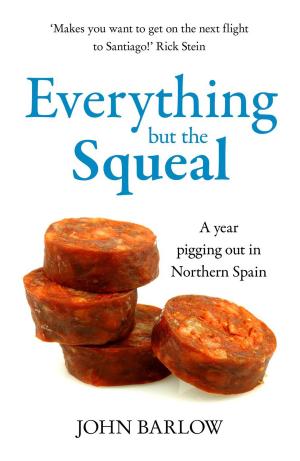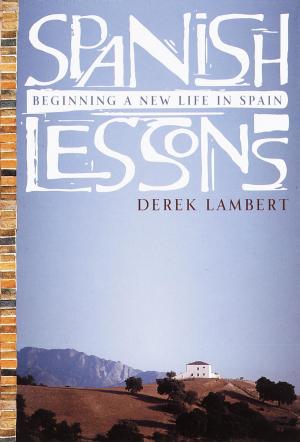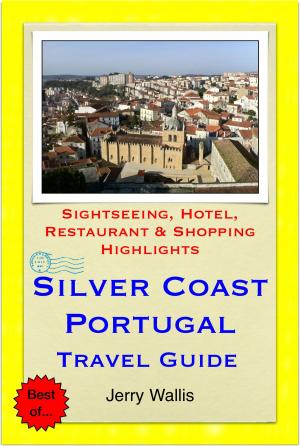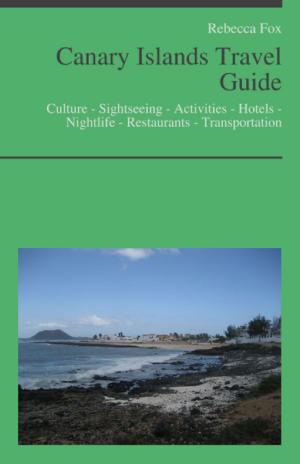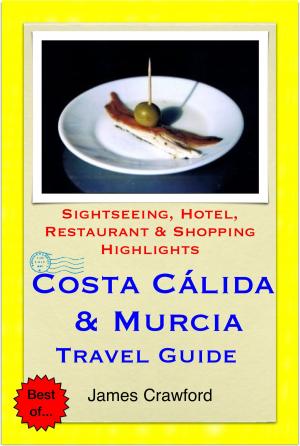| Author: | Kelly Lipscomb | ISBN: | 9781588437143 |
| Publisher: | Release Date: May 22, 2011 | Publication: | May 22, 2011 |
| Imprint: | Language: | English |
| Author: | Kelly Lipscomb |
| ISBN: | 9781588437143 |
| Publisher: | Release Date: May 22, 2011 |
| Publication: | May 22, 2011 |
| Imprint: | |
| Language: | English |
Geographically, Cataluña, the region surrounding Barcelona, is not unlike Spain as a whole. The soaring Pyrenees Mountains in the north separating Spain from France yield to the Mediterranean's Costa Brava in the east. Were it not for the ungainly resorts that have diminished its natural beauty since the 1960s, this "wild coast" would be the loveliest, if not the most extreme Mediterranean coast of the peninsula. Still, its features the dark, jagged rock outcroppings, the foreboding cliffs and the general angriness of it all have not been completely buried in concrete, just harnessed for the ease of our enjoyment. There are the remarkable ruins of Empíries to explore, vestiges of the Greeks and the Romans who were truly the first to develop this coast, and a few of its coastal towns Cadaques comes to mind were never wrecked. We have the Pyrenees to thank for saving Cadaques, since to reach it one must ascend and wind around the lower reaches of these mountains for 45 minutes (on good roads) before making the descent toward this, Salvador Dalí's favored retreat. Developers tend to favor easier roads. Higher up in the Catalan Pyrenees, where the peaks top out at over 3,000 m (9,840 feet) and waterfalls cascade down their faces, there is more to be thankful for. A series of Romanesque churches, the product of Cataluña's medieval golden age, when its counts allied with neighboring Aragón to create a seafaring kingdom unrivaled in the Mediterranean at the time, are hidden in far flung valleys, set along crystalline streams away from the package tourists and even paved roads. With snowfall, the Catalan Pyrenees offer great cross-country and downhill skiing and, when it melts, great whitewater adventures. Throughout the year one can marvel at the secluded wilderness of the Aigüestortes National Park and wonder why they ever spent so much time in Barcelona. Barcelona is the stylistic capital of Spain, endowed with bold modernisme architecture, traditionally the seat of challenging art movements and, by and large, a truly modern, European city. To the west, the modest mountains surrounding the city, the champagne vineyards and beyond them the wild massif of holy Montserrat give way to the eastern realm of the barren plateau known as the Meseta, Cataluña's driest and most desolate expanse. As the region narrows out toward the south near its border with Valencia, the delta of the Río Ebro, Spain's longest river, fosters wetlands that attract clouds of migratory birds. Here, as throughout the coastal regions of Cataluña, the climate is strictly Mediterranean with generally mild winters and brutally humid and hot summers a stark contrast to the dry air and snowy peaks of the Pyrenees. In its diverse landscapes Cataluña certainly looks like Spain, even if it doesn't act like Spain. But by its own measure Cataluña adds an element of sophistication and openness that serves to complement the rest of the country. Without it, Spain would have its wine, but no champagne. Barcelona is a city that immediately calls to mind great art and architecture (here one and the same), music, nightlife, walks, a great many things, as well as a great deal of misunderstanding. As a Catalan friend pointed out, "We are a complex people living in a thousand places at once." Such a maelstrom of commerce, culture and idealism is not easily correlated, often leaving visitors with the feeling that, while they may have seen a Gaudí façade, they were never invited inside to see what was holding it up. Here is the most detailed guide to Barcelona and the Cataluña region that surrounds it, loaded with maps, photos and complete information on where to stay, where to dine and what to see and do. Also included is an extensive general section on Spain as a whole. An excerpt from Hunter's Adventure Guide to Spain, which is 670 pages in print, this is the equivalent of 200 print pages.
Geographically, Cataluña, the region surrounding Barcelona, is not unlike Spain as a whole. The soaring Pyrenees Mountains in the north separating Spain from France yield to the Mediterranean's Costa Brava in the east. Were it not for the ungainly resorts that have diminished its natural beauty since the 1960s, this "wild coast" would be the loveliest, if not the most extreme Mediterranean coast of the peninsula. Still, its features the dark, jagged rock outcroppings, the foreboding cliffs and the general angriness of it all have not been completely buried in concrete, just harnessed for the ease of our enjoyment. There are the remarkable ruins of Empíries to explore, vestiges of the Greeks and the Romans who were truly the first to develop this coast, and a few of its coastal towns Cadaques comes to mind were never wrecked. We have the Pyrenees to thank for saving Cadaques, since to reach it one must ascend and wind around the lower reaches of these mountains for 45 minutes (on good roads) before making the descent toward this, Salvador Dalí's favored retreat. Developers tend to favor easier roads. Higher up in the Catalan Pyrenees, where the peaks top out at over 3,000 m (9,840 feet) and waterfalls cascade down their faces, there is more to be thankful for. A series of Romanesque churches, the product of Cataluña's medieval golden age, when its counts allied with neighboring Aragón to create a seafaring kingdom unrivaled in the Mediterranean at the time, are hidden in far flung valleys, set along crystalline streams away from the package tourists and even paved roads. With snowfall, the Catalan Pyrenees offer great cross-country and downhill skiing and, when it melts, great whitewater adventures. Throughout the year one can marvel at the secluded wilderness of the Aigüestortes National Park and wonder why they ever spent so much time in Barcelona. Barcelona is the stylistic capital of Spain, endowed with bold modernisme architecture, traditionally the seat of challenging art movements and, by and large, a truly modern, European city. To the west, the modest mountains surrounding the city, the champagne vineyards and beyond them the wild massif of holy Montserrat give way to the eastern realm of the barren plateau known as the Meseta, Cataluña's driest and most desolate expanse. As the region narrows out toward the south near its border with Valencia, the delta of the Río Ebro, Spain's longest river, fosters wetlands that attract clouds of migratory birds. Here, as throughout the coastal regions of Cataluña, the climate is strictly Mediterranean with generally mild winters and brutally humid and hot summers a stark contrast to the dry air and snowy peaks of the Pyrenees. In its diverse landscapes Cataluña certainly looks like Spain, even if it doesn't act like Spain. But by its own measure Cataluña adds an element of sophistication and openness that serves to complement the rest of the country. Without it, Spain would have its wine, but no champagne. Barcelona is a city that immediately calls to mind great art and architecture (here one and the same), music, nightlife, walks, a great many things, as well as a great deal of misunderstanding. As a Catalan friend pointed out, "We are a complex people living in a thousand places at once." Such a maelstrom of commerce, culture and idealism is not easily correlated, often leaving visitors with the feeling that, while they may have seen a Gaudí façade, they were never invited inside to see what was holding it up. Here is the most detailed guide to Barcelona and the Cataluña region that surrounds it, loaded with maps, photos and complete information on where to stay, where to dine and what to see and do. Also included is an extensive general section on Spain as a whole. An excerpt from Hunter's Adventure Guide to Spain, which is 670 pages in print, this is the equivalent of 200 print pages.

